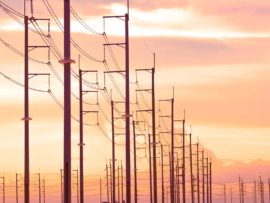
The increase in the number of AI data centers in the US could drive utility costs higher and has put parts of the grid in the hands of tech companies, The New York Times reported on Aug. 14.
Companies such as Google, Amazon, and Microsoft are reshaping their relationships with the energy grid to support AI workloads. Their subsidiaries now generate and sell electricity, both to the tech companies and to the general public. But even with all of this infrastructure, AI may demand more power than the grid can give without compromise.
Ohio ruling may shape national policy
A potential precedent has emerged in Ohio, where American Electric Power (AEP) in late 2024 proposed creating a new customer class for data center operators. Under the plan, large new data center customers would be required to pay fixed rates for at least 85% of their energy allotment, even if they use less.
Amazon, Google, Meta, Microsoft, and other tech companies argued the plan lacked flexibility, touted the benefits data centers bring in jobs and other ways, and asserted they should pay less than the utility asked.
In July, the Public Utilities Commission of Ohio sided with AEP.
“I am grateful for the collaboration of all the parties involved in this filing, which ultimately brings clarity and certainty for infrastructure planning,” said Marc Reitter, AEP Ohio president and chief operating officer, in a press release on July 9. “We are looking forward to ending the moratorium and continuing to support development of more data centers in our service territory.”
Tech companies petitioned the commission on Aug. 8 to reconsider, according to the Times.
Data centers projected to draw 12% of US electricity by 2026
In 2023, data centers consumed 4% of the entire country’s electricity — a figure the Department of Energy projects will triple by 2026, largely due to generative AI.
This surge raises a critical question: Should tech companies cover the bills for upgrading the grid used by both businesses and consumers? Naturally, representatives of tech companies have signaled reluctance, and whether they contribute could depend on future legislative pressure.
A Virginia agency warned that electricity bills for residents could rise by $276 annually by 2030 due to data center expansion, according to a December 2024 report cited by the Times.
Tech firm’s energy play creates new market dynamics
The conundrum leads to alternate setups, such as tech companies owning their own power plants (utilities are not legally allowed to do). These subsidiaries have come to represent a larger portion of sales on the wholesale electricity market.
Sales of electricity from major tech companies into the wholesale electricity market have reached more than $2.7 billion in the past decade, according to Jeremy Singer-Vine of the Federal Energy Regulatory Commission, as cited by the Times.
Another complicating factor: Tech companies could build data centers that sit idle for years if they do not find customers.
Meanwhile, the Trump administration encourages an aggressive buildout of AI infrastructure to power the likes of OpenAI’s large language models.
In early August, Google agreed to reschedule or pause non-urgent AI workloads at its data centers when Indiana Michigan Power and Tennessee Valley Authority grids are strained.





